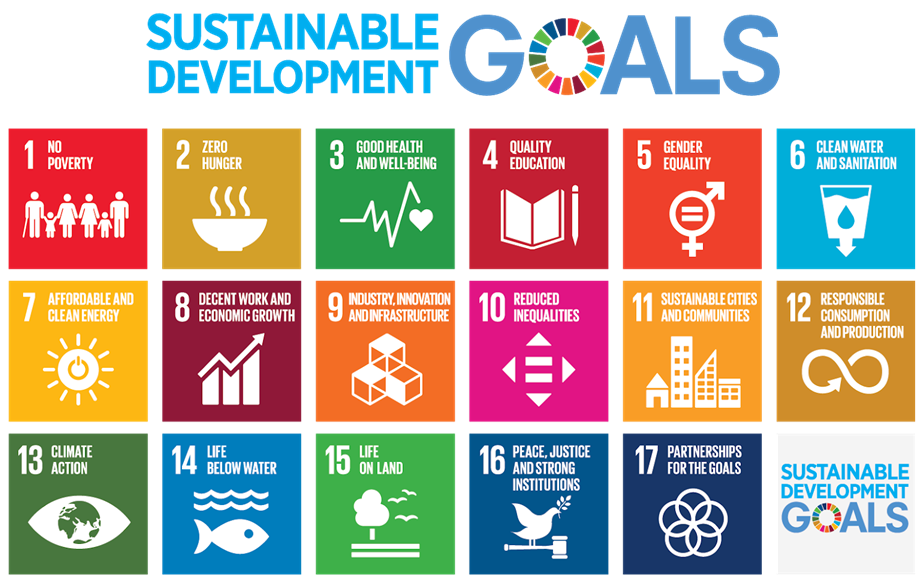By Saghar Motarjemi, Chiara De Notaris, Johannes (Jeroen) Pullens and Claudia Kalla
According to the Food and Agriculture Organization (FAO), agroecology has a framework of ten elements, such as diversity, efficiency and responsible governance, and is characterized by a holistic approach to the challenges facing the global food system. Agroecology is gaining attention as a means to meet Sustainable Development Goals (SDGs) defined by the United Nations (UN), which set the global development agenda until 2030 as an integrated and universal act (Figure 1). The state of agricultural and food systems affect all the goals, either directly or indirectly. However, in this article we will mainly focus on the direct effects. By improving the sustainability of agricultural and food systems, agroecology can contribute to:
Although the nature of the SDGs is universal, context-specific solutions are necessary to meet the goals. This aligns with the approach of agroecology, which is shaped by local priorities.

Figure 1: The 17 Sustainable Development Goals (SDG) as defined by the United Nations.
People living in rural areas produce 80% of the food consumed worldwide, while constituting a large proportion of the global poor. By applying agroecological practices in these areas, it would be possible to improve resource conservation and nutrient circulation to secure greater yields, while reducing production costs.
In particular, diversification, external input reduction and alternative marketing strategies have the potential to improve farmers’ income by 30%, and practices such as Integrated Pest Management (IPM) can lead to significant improvements in production. Although women constitute up to 50% of the agricultural labor force in the developing world, they generally have less access to resources, services and information. By putting a strong emphasis on the creation of accessible knowledge and gender equality, agroecology contributes to empowering rural women, with a positive cascade effect on the well-being of the entire household. In this way, agroecology has the potential to contribute to economic growth, gender balance as well as decent work and working conditions, thus reducing poverty.
Many countries across the world are still suffering from food scarcity and malnutrition. Based on the Development Initiatives report from 2017, 2 billion people lack key micronutrients in their diet and 155 million children are undernourished, which indicate that reaching SDGs 2 and 3 remains a huge challenge. Several studies show that agroecology could be a solution on the global scale to provide a level of food security.
When agroecology is applied in production systems, it contributes to sustainable and resilient food production, thereby helping to maintain ecosystems and likely improving land and soil quality. Agro-biodiversity entails a variation of plant and animal species and varieties used directly or indirectly for food production in agriculture, forestry and fisheries. This is a key element of agroecology and can lead to a diverse range of available food products. Although agricultural diversity is complicated to achieve in practice, it plays an important role in improving dietary diversity, which is strongly associated with improved nutritional status. Furthermore, agroecology has the potential to reduce the risks associated with chemical exposure, hence positively influence the health of rural workers and of consumers through the promotion of reduced, alternative (non-chemical) and safe application of crop protection products.
Increases in yield and diversity alone will not be able to address the global challenges of hunger, good health and wellbeing. A system change that tackle poverty, inequality and limitation to access is required to reach these goals. However, a systematic approach relying on ethical values, which is often considered part of agro-ecological approaches, could offer an opportunity to address these issues in an integrated manner.
Efficiency and recycling are two of the key elements of agroecological systems. They lead to a better use and conservation of the available resources (e.g., nutrients, water, and land) and a reduction of waste. This allows farmers to be less dependent on external inputs while reducing adverse impacts on the environment. In areas where agricultural production is an important driver of greenhouse gas emissions and degradation of natural ecosystems, agroecological practices would help to increase the environmental sustainability of agricultural systems. For example, growing cover crops during less productive periods has been shown to significantly decrease the loss of nitrogen to ground and surface waters, compared to leaving the soil bare. This would reduce the related negative environmental consequences, while increasing long-term soil fertility and carbon sequestration. However, cover crops may depending on management methods enhance direct emissions of nitrous oxide, which is a potent greenhouse gas.
As we have seen, agroecology is connected with many of the sustainable development goals; however, agroecology alone would not be enough to achieve the specific SDGs presented in this article and therewith tackling global issues. Nevertheless, the fundamental of agroecology and the country specific implementation has a great potential to help reaching the goals when combined with other efforts.
http://www.fao.org/3/ca3666en/ca3666en.pdf
http://www.fao.org/gender/background/en/
Driving action across the 2030 Agenda for Sustainable Development (2017): http://www.fao.org/3/a-i7454e.pdf